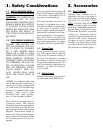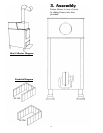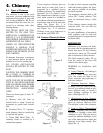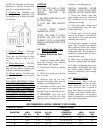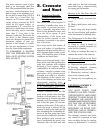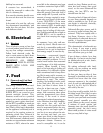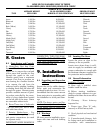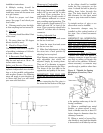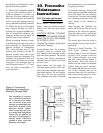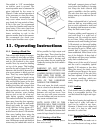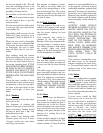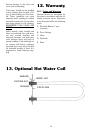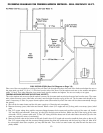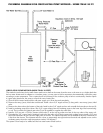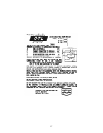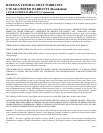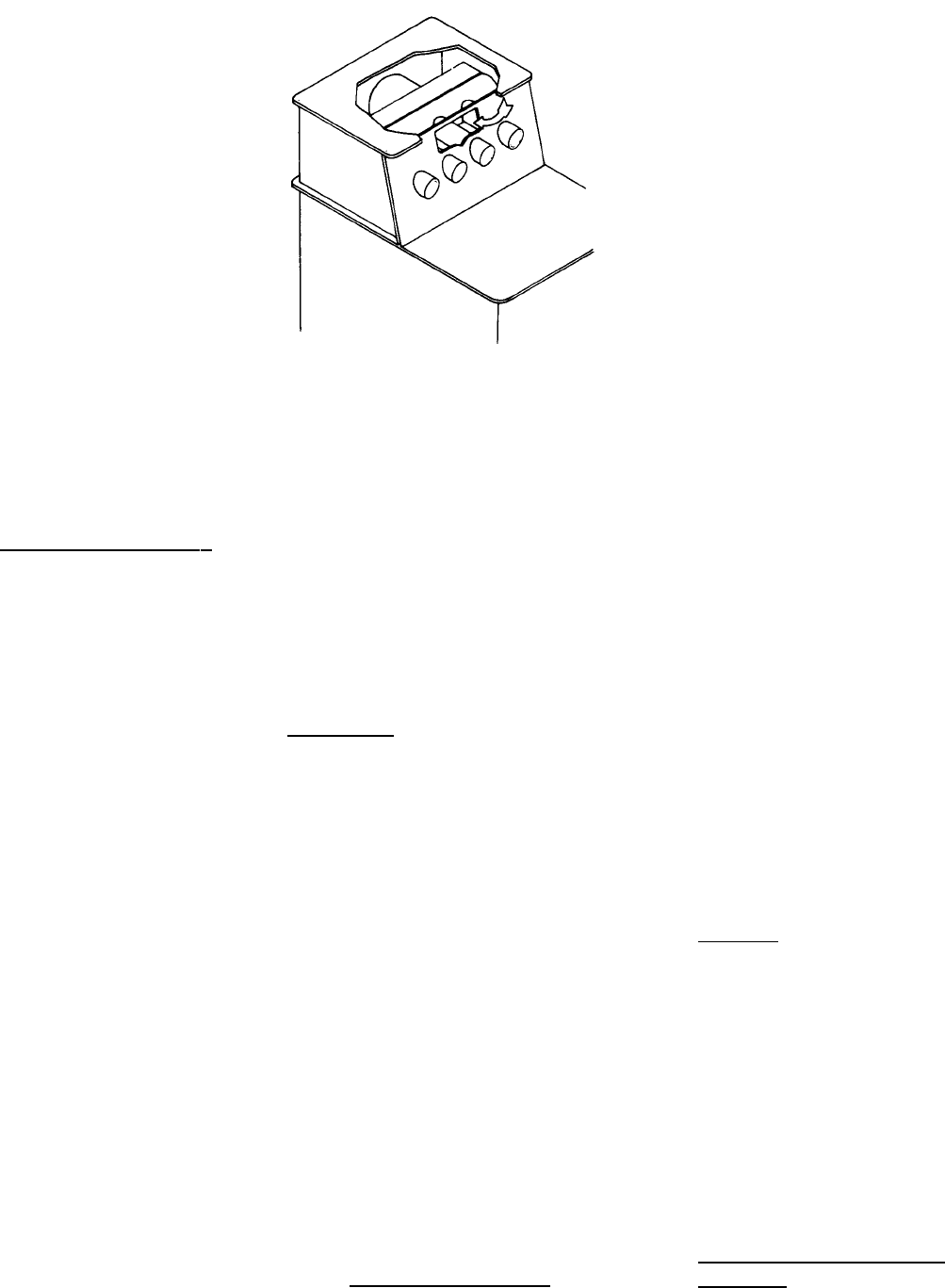
12
One-eighth to 1/4" accumulation
on interior parts is normal. The
most important area is between the
pipes indicated by the arrow in
Figure 6. Under normal operation it
is not necessary to clean the cham-
b e r. Excessive accumulation will
only occur when wood is burned
very slowly for long periods of time.
If this is the case, we recommend
you clean the chamber and burn the
stove hotter. If the extra heat from
the hotter fire is too much for your
home, switching to coal, in the
warmer months may be the answer.
We recommend you check your
interior spiral chamber once a year.
11.1 Starting a Wood Fire
Take about eight sheets of newspa-
per, crumble up into balls and place
on top of grates on dual fuel models
and on the firebrick in the wood
models. Next, lay some fine kindling
on top of the paper. This kindling
must be dry and no larger than 3/4"
diameter and should be layered in a
criss-cross pattern to allow good air
flow. Then, lay some slightly larger
pieces (2" diameter) of wood on top
of the kindling. Open draft controls
fully and light the paper at the bot-
tom just inside the door. Now, close
loading door (also ash removal door
on dual-fuel models) and allow kin-
dling and wood to catch fire. After
about five minutes, open loading
door an inch or two for a few sec-
onds before opening completely.
This method will allow the smoke to
clear away from the door opening.
Now the fire should be well-estab-
lished and ready for some larger
wood. Add four or five pieces of 3"
to 4" diameter wood. Close door
and let burn for about 5-10 minutes.
Now open loading door using the
same method as before and load
stove with wood to the desired full-
ness. All Harman wood and dual fuel
stoves may be loaded with wood as
full as possible for high output and
long burn time. Then close the door
and allow all the wood to catch fire .
After all the wood is burning well,
you may reduce the air entering the
f i rebox by turning the draft contro l s
c l o c k w i s e .
WA R N I N G ! DO NOT CLOSE
BOTH DRAFT CONTROLS ON
LOADING DOOR AT ONCE AND
THEN OPEN THE DOOR, AS
THIS WILL CAUSE AN EXPLO-
SION OF THE UNBURNED
GASES IN THE FIREBOX!
Close and open the draft controls
one at a time to the desired setting.
This setting should normally be
between one and two turns. Less
than one turn will cause excessive
creosote buildup and over two turns
may cause excessive heat.
NOTE: EACH STEP IN THIS
PROCESS WILL TAKE LONGER
IF YOUR WOOD IS DAMP OR
WET AND WILL INCREASE
SMOKE. Normally the bottom draft
control is kept closed to burn wood.
11.2 Starting a Coal Fire
Start a fire using the same proce-
dure as for wood.
Add small, compact pieces of hard-
wood when the kindling is burning
hot. Keep the draft controls fully
open to establish a hot fire quickly.
The ash door also may be opened
during start-up to accelerate the ini-
tial burn.
When a substantial bed of red wood
coals are built up, start adding coal
(pea or nut is preferred to stove coal
for starting) small amounts at a time.
Keep the draft control open.
Continue adding small amounts of
coal until there is a solid bed of
burning coal. Do not add too much
at one time. Allow sufficient time
between each small loading (at least
5-10 minutes), so that each loading
has time to ignite thoroughly before
the next load is put in. When a sub-
stantial bed of burning coals has
been established, fill the stove to the
top of the firebrick. A deep bed of
coal always will burn more satisfac-
torily than a shallow bed.
When most of the wood is burned
and the coal is completely ignited
(usually 5-10 minutes or less after
filling the stove), the draft control
should be turned down to the prop-
er operating level. (If the ash door
has been opened, it must be closed
to prevent overfiring, which can
cause dangerously high tempera-
tures.)
11.3 Loading
Coal should never be added unless
there is a reasonable hot fire. The
coal bed should be bright and vigor-
ous.
If the fire is burning hot and there is
a deep bed of coals, full loads of
coal can be added at any time.
However, if there is not a deep bed
of coals, it is best to add small
amounts of coal at first.
11.4 Increasing Heat From a
Low Fire
Every effort should be made not to
let a coal fire burn too long so that
Figure 6
11. Operating Instructions



